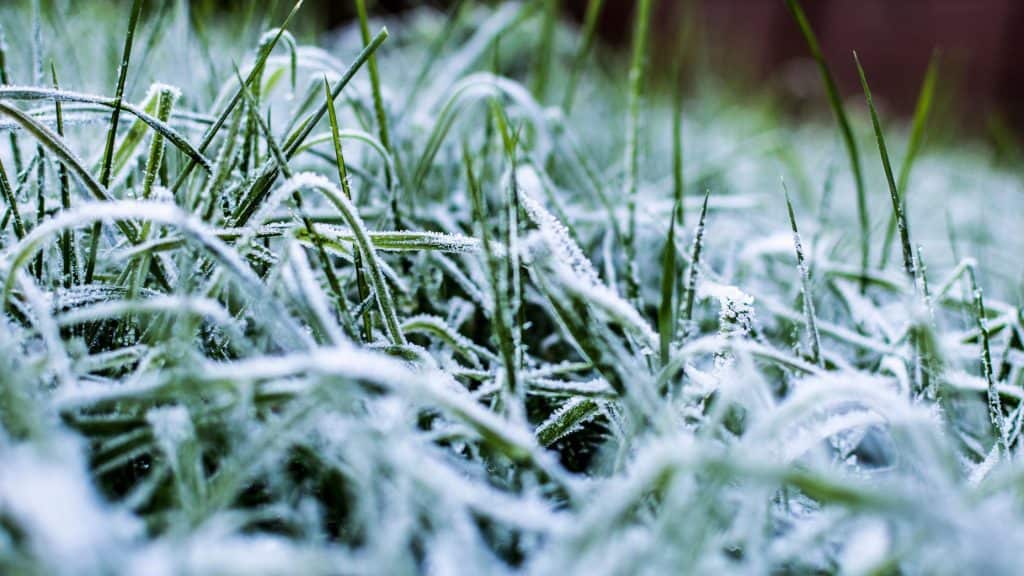As temperatures start to drop, it’s time to get your lawn ready for winter. Winterizing your lawn is an important part of keeping a healthy and vibrant outdoor space that will bloom again come spring. In this blog post, we’ll discuss some tips and tricks on how to properly winterize your lawn so you can rest assured knowing you’ve done all you can do in preparation for the colder months ahead. From aerating, fertilizing and reseeding to dealing with weeds, this guide will help make sure that when the snow melts off in the springtime, so too will come back a beautiful emerald green carpet of grass that you’ll be proud to show off!
Choose the right grass species for your climate and region – this will make winterizing easier
When it comes to winterizing your lawn, nothing is more important than choosing the right grass species. Different climates and regions require different watering schedules, growing seasons, and maintenance needs which will largely determine which grass species will be best suited for your lawn. Taking the time to research what type of grass is best for your climate can save you a lot of headaches in the future – especially when it comes time to winterize! Doing the extra work upfront can give you a beautiful, healthy lawn year round with less effort and less cost. So don’t let yourself become overwhelmed by technicalities: take the steps now to ensure that both you and your grass are prepared come fall!
Mow your lawn at a slightly higher height to protect the roots from cold weather
Many of us dread the end of summer and the incoming cold weather. But here’s a tip that will help your lawn survive winter: mow it at a slightly higher height. Keeping the grass taller helps protect the roots from frost and other extreme temperatures, leaving them unharmed when the warmth returns in spring. Give your lawn a little extra care this fall by setting your blade to a higher level as you mow—you won’t regret it!
Aerate the soil every fall to improve water drainage and increase oxygen levels in the soil
Every fall, it’s essential to aerate the soil in your garden or lawn. Not only is this an important way to improve water drainage, but oxygen levels will be significantly increased as well! Doing so can also help create pockets for minerals and other nutrients that your plants need to grow. Plus, by aerating the soil you break up compacted soils, allowing more roots to get through and spread throughout the soil for a more even coverage. So if you want to make sure your garden or lawn flourishes, don’t forget to aerate the soil each fall!
Rake up fallen leaves, twigs, and other debris to keep your lawn healthy
Keeping your lawn healthy can be as easy as cleaning up your yard. Raking up dead leaves, twigs and other debris help give your lawn an edge. This simple task can have a big impact on the overall health of your grass and plants. When you rake up these items, it prevents the lawn from being smothered which improves air circulation, allowing nutrients to reach the soil and roots more easily. Plus, it helps prevent diseases from spreading. Also, it’s a great way to get outside for some fresh air! So get out there with your rake and keep your lawn healthy!
Apply a winter fertilizer to give your grass extra nutrients before the cold season starts
Now is the perfect time to apply winter fertilizer on your grass to give it the nutrient boost it needs to endure the cold months ahead. Winter fertilizers are specifically designed to promote root growth and help your grass stay strong, even through frost and snow. As an added bonus, it can also make spring greener and shorter for fun outdoor activities. Don’t wait too long—apply winter fertilizer to give your lawn a fighting chance against what can be a tough season!
Cover tender grasses with a layer of burlap or straw during especially cold days
Protecting tender grasses from frost doesn’t have to be complicated. Covering them with a layer of burlap or straw just before nightfall is all it takes to keep them at optimal health while they’re in the cooler months. With this simple step, you can enjoy the vibrancy and beauty of your lawn year round – no matter the temperature outside! Plus, after you’re done making sure your grasses are safe and sound, take the time to curl up indoors with a cup of hot cocoa and let nature take its course.
Winterizing your lawn has never been easier. All it takes is a few simple steps and adjusting your grass selection for the climate in your region. Start by mowing your lawn at a slightly higher height to help protect the roots and then aerate the soil every fall which will improve drainage, as well as increasing oxygen levels. Then make sure to rake up any fallen leaves, twigs, or other debris that might affect the health of your lawn. Don’t forget to apply a winter fertilizer to give the grass extra nutrients before cold weather sets in. Finally, cover any tender grasses with a layer of burlap or straw on especially cold days for maximum protection. Taking care of your lawn requires regular attention, but if you plan accordingly, you can ensure that it survives winter without too much effort!



